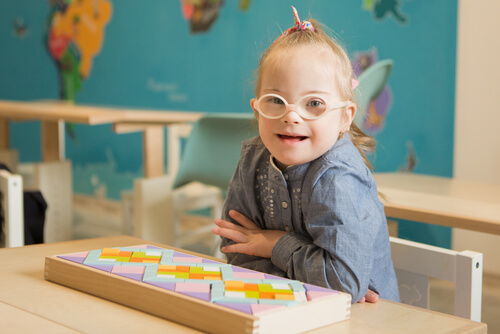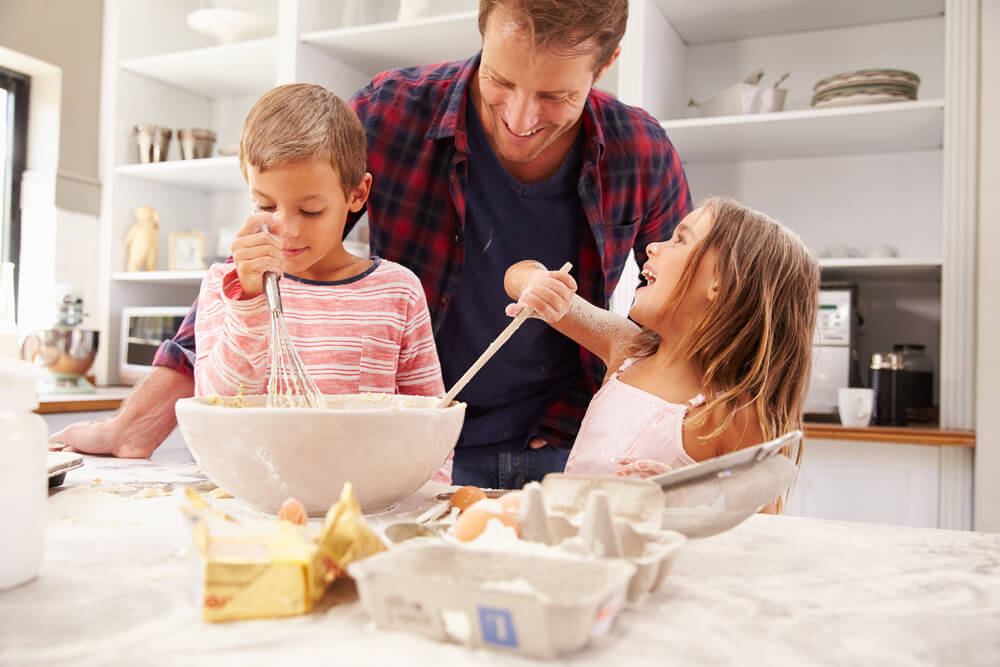Good Parenting Makes Creative Children
Jan 2, 2022 Teaching kids how to write is easy and begins as early as age three, but you can stimulate their creativity genes even before that.
Whether you’re a permissive parent or an authoritarian parent, child behavior can be confusing. I present creative ideas for kids that are perfect indoor activities during this difficult time.
In This Article
Your parenting style has a major influence on your child’s physical and cognitive development. According to Berzenski and Yates (2013), bad parenting actions such as screaming, punishment, and lack of physical and emotional support can make children susceptible to depression and anxiety. This approach certainly doesn’t encourage children’s creativity.
On the flip side, positive parenting is all about warm and loving interactions where parents listen and empathize with the child but establish and maintain certain limits.
However, secure attachment to parents leads to healthy social, cognitive, and emotional development. Plus, creative kids are more optimistic and confident in social settings.
With a positive approach, parents can help kids tap into their creative imagination, too.
Nine Ways You Can Foster Creativity in Your Child Using the Right Parenting Strategy
Here is a list of proven techniques that you can try and nurture your child’s creative soul.
1. Trust the Process
The first important step is to become aware of the fact that every good thing takes time. Focusing too much on a final result will not speed up the learning process.
Instead, it will draw your focus away from your intention, which is to help your child. Also, creativity is not something that can be learned overnight.
You’ll end up with a beautiful creation of a mess. But, if you use a step-by-step approach, you’ll succeed.
2. Give Them a Designated Space
Start by creating an atmosphere where your child feels stimulated. By this, I don’t mean establishing a decorative playroom.
The space you choose can be a tiny corner with a sack of old clothes for painting or a box filled with LEGOs. The idea is to make your child feel that he/she has power over their space.
A fun idea is to divide the storage, learning, and tasks into different stations. Having specific areas in the place room allows your child to easily pick and choose which activities they want to do. Plus, having all their needed supplies at the stations will make it easier for them to get started and cleanup.
Some station ideas include the following:
- Design station: Fill this space with color pencils, crayons, colored and white paper, tape, scissors, coloring books, and other crafting supplies.
- LEGO table: Repurpose old cardboard storage cartons into toy boxes and fill them with your kid’s favorite LEGO toys.
- Exploration center: It should be an area dedicated to simple science experiments such as weighing, mixing, and measuring.
- Water table: Kids love to play with water. Your child can learn how to pour water into different objects, see how objects sink or float while improving their problem-solving skills.

3. Avoid Micromanaging
Is their bedroom too dark at night? Do experiments and let them find their own solutions.
Children have an amazing ability to be creative and find solutions to problems when they play freely. As luck would have it, micromanaging diminishes this ability they have had since birth.
Don’t be bossy. Giving your child a certain level of independence to experiment with their ideas is healthy and a must-do.
Being a control freak can exhaust children, and they won’t be able to experience natural consequences and resolve problems on their own. Their creativity will be discouraged, and they’ll become anxious as they develop a fear of mistakes.
4. Learn the Art of Letting Go
The best parenting skill you can model here is patience. If you remain calm, your kids will have more time to come up with interesting solutions. This will boost their self-belief as they solve a riddle using their own mind. Moreover, they will start to trust you more, and your relationship will be strengthened.
How to do this?
- Be willing to let your child learn, explore, and make repeated failed attempts to resolve a problem before you jump in and tell her/him “how to do it right.”
- Remind yourself that every child has a different approach to solving issues.
- Understand that every problem has multiple solutions.
5. Help Your Kids Activate Their Senses
This is a very important point for me. Expose your child to the world so that they can engage all the five senses to learn about their surroundings.
Again, these activities should be expansive.
Take them to a nearby museum, library, or on a nature walk. Ask them to imagine what traveling to a zoo might be like. What animals would they see? What noises will they hear? Your child will probably tell you bird chirping, wind in the trees, children giggling, etc.
6. Show Appreciation
As a parent, you must understand the difference between encouraging and rewarding. I firmly believe that parents should always appreciate but should not incentivize their kids to exhibit creativity.
Appreciation and encouragement push kids to do what they really want to do, but rewards usually interfere with the creative process and reduce the quality of their imaginative responses and creations. In fact, the candies you give them confuse them about the value of their work.
Remember that your child should enjoy the process of creating without the thought of “what reward I’ll get in the end.”
For instance, if your kid participates in a school art contest, try not to focus on the win but on the process and skills they gain. This is crucial because if they do not win, they won’t take it hard since they enjoyed the creative work.
7. Model Creativity

Children do what they see. Be a role model for them because it is very important to influence a child’s physical activity. They learn by copying others.
I personally love making miniature food. Children pick up on energy and passion when they see their moms doing something creative. You can do the same at home. Sit with them in their room and sketch next to your kid or just let them watch how you knit their sweaters.
The idea is to let them observe you and discuss what you are doing. Share with them what you love. It could be science, cooking, photography, etc.
8. Expose Them to Diverse Viewpoints
Accepting different viewpoints allows you to see the world in new ways. These perspectives can result in fresh insights by making you question your current opinions about the people, places, and objects.

There are multiples ways to give your child a new outlook.
- Read them bedtime stories related to a different culture.
- Enroll them in a foreign language class.
- Watch television programs that represent other cultures, such as National Geographic.
- Take them to a local ethnic restaurant.
- Encourage them to be friends with kids from different cultural backgrounds.
- Arrange a culture party and invite your neighbors and friends with kids.
Pretty soon, you’ll begin to see the difference in the way they think and showcase their ideas keeping in mind other’s perspectives. Plus, these activities not only teach about creativity and diversity, but you’ll see that it opens the door for many valuable conversations such as equality, justice, and fairness.
9. Support Your Creative Kid’s Passion
According to a study by a custom essay writing service platform, long-lasting creativity comes out of intrinsic motivation. This is when your child gets real pleasure out of doing something. Almost 45% of parents agree that they allow their kids to do things that excite them.
So, you should regularly expose your child to multiple opportunities such as a computer program, a language course, or ballet. By exposing them to multiple options, you’ll get to see if they find something that makes them interested.
If your girl shows a true affinity for robotics or cars, think about ways to ignite her passion – she just might discover an activity that will give meaning to her life. Understand that it is not enough for creativity to be valued at home; instead, it must also be encouraged through schooling and other aspects of life.
How to do this?
For example, enroll your kids in a school that sees creativity as a necessary skill. Schools are a perfect place that gives your kid the opportunity to learn while practicing the skill.
How do I know if a school prioritizes creativity? It’s quite easy. A lot of schools take pride in their art, theatre classes, music programs, and embrace interdisciplinary STEM (science, technology, engineering, and mathematics) education. Check their website, social media pages, and reviews to make an educated guess.
Child Development
Raising creative kids is fun, especially when you can teach them important lessons of life through colors and playing activities. The creative imagination of children helps them to cope with life’s struggles. Creativity also helps children to express their emotions and feelings and be confident in social settings. There are many more crafts for toddlers than I list here that can result in a better relationship with kids than parents expect.
I hope parents find these kids’ creative activities at home as positive.
